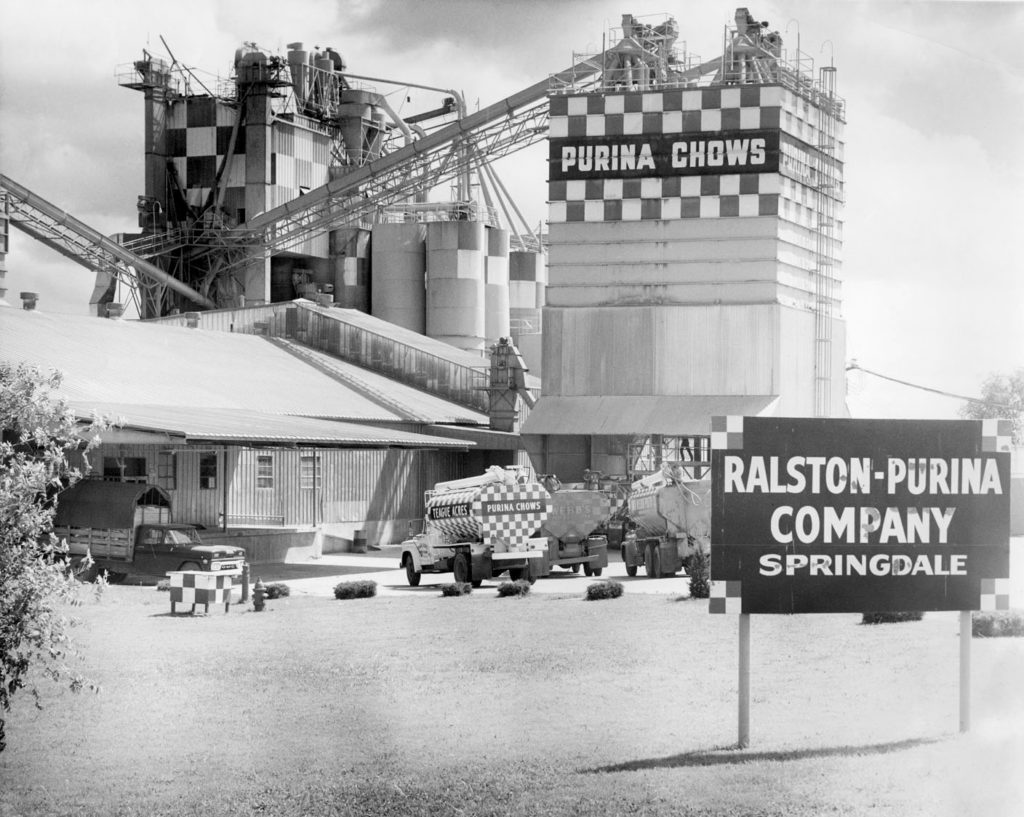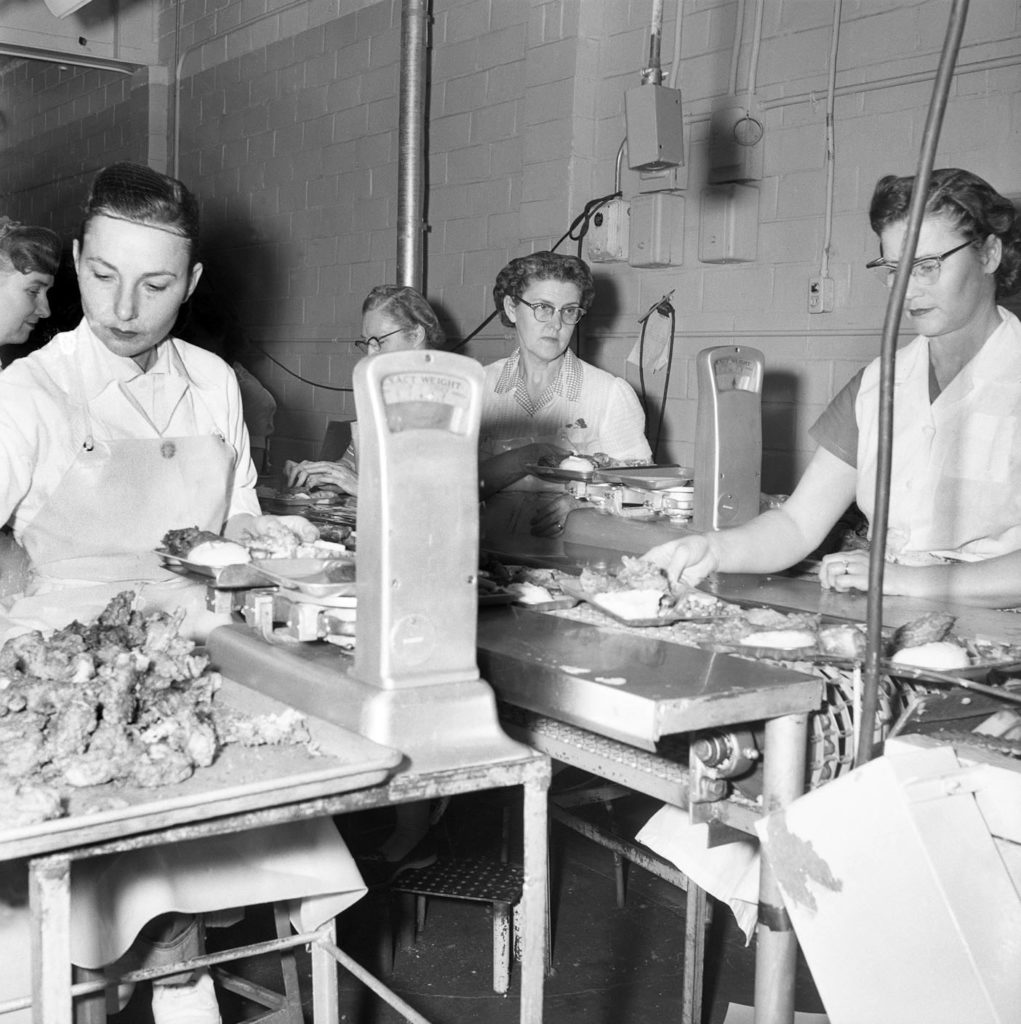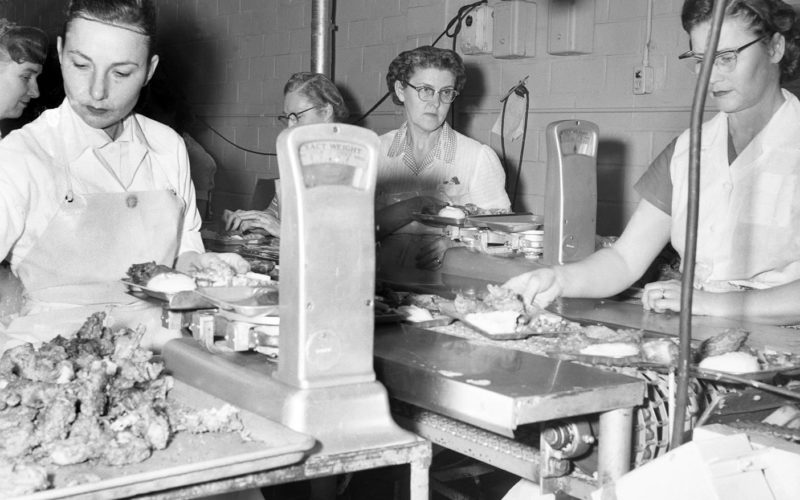If you were an American “homemaker” in the middle of the 20th century, the poultry industry in Northwest Arkansas directly affected you — and you, in turn, directly affected it.
That’s one of the things Marie Demeroukas learned in creating “A Better Bird,” the latest photo exhibition at the Shiloh Museum of Ozark History in Springdale. She already knew, she says, that chickens had played a complex and vital part in the development of the Northwest Arkansas economy.

“But working on this exhibit helped me better understand the details and timeline,” Demeroukas says. “Such as how, in the 1950s and 1960s, the American ‘housewife’ had a say in the look of supermarket chickens. She wanted them to be cut into pieces — not whole — and be meatier and uniform in size.”
Also, she explains, “because consumers wanted clean-looking skin, the industry switched to growing white-feathered birds, since the skin of chickens with red feathers tended to be colored and spotty.”
And, she reveals, in the mid-1950s, Campbell Soup in Fayetteville started packaging what might have been the working wife’s best friend — “a novel convenience item, frozen, pre-cooked chicken TV dinners.”
While the “rising fortunes of the poultry companies contributed to the area’s overall wealth and led to the growth of allied industries such as trucking, feed mills, and food manufacturers” as well, Demeroukas says, it also changed the cultural composition of Northwest Arkansas and challenged the infrastructure.
“Since the 1980s, the poultry companies’ need for a large workforce has fueled an influx of first- and second-generation migrants from other parts of the U.S. and the world, such as Latin America and the Marshall Islands,” she says, “and their arrival has brought diversity and cultural richness to our area. As the poultry industry has scaled up, so too has the strain on the environment from chicken litter run-off and processing-plant wastewater, requiring further strategies to better protect our environment.”
With this exhibit, she says, “I hope folks have a better appreciation of what it takes to put a chicken dinner on their table, from the early poultrymen who knew the value of hard work and were willing to take chances on a fledgling industry, to the growers who raise tens of thousands of chickens at a time in each grow-out house, to the researchers who worked to breed a better chicken to meet market demand, to today’s government-declared ‘essential workers,’ the processors who work long hours under difficult and dangerous conditions.”
And, she adds, “now’s the perfect time to mask-up and visit the museum. In addition to ‘A Better Bird,’ we have two special exhibits. ‘Make Do,’ which will close April 10, is a look at Ozark resourcefulness in turning discarded materials into new objects. ‘I Just Know I Like to Paint’ is a yearlong look at folk artist Essie Ward of Searcy County and her paintings of the adventures of Miranda and Hezzakiah, an old Ozark pioneer couple.”

If you miss seeing “A Better Bird,” though, it will be transformed into an online exhibit after it closes in mid-June.
__
FAQ
‘A Better Bird’
WHEN — Through June 12; hours are 10 a.m.-5 p.m. Monday-Friday
WHERE — Shiloh Museum of Ozark History, 118 W. Johnson Ave. in Springdale
COST — Free
INFO — 750-8165 or shilohmuseum.org



